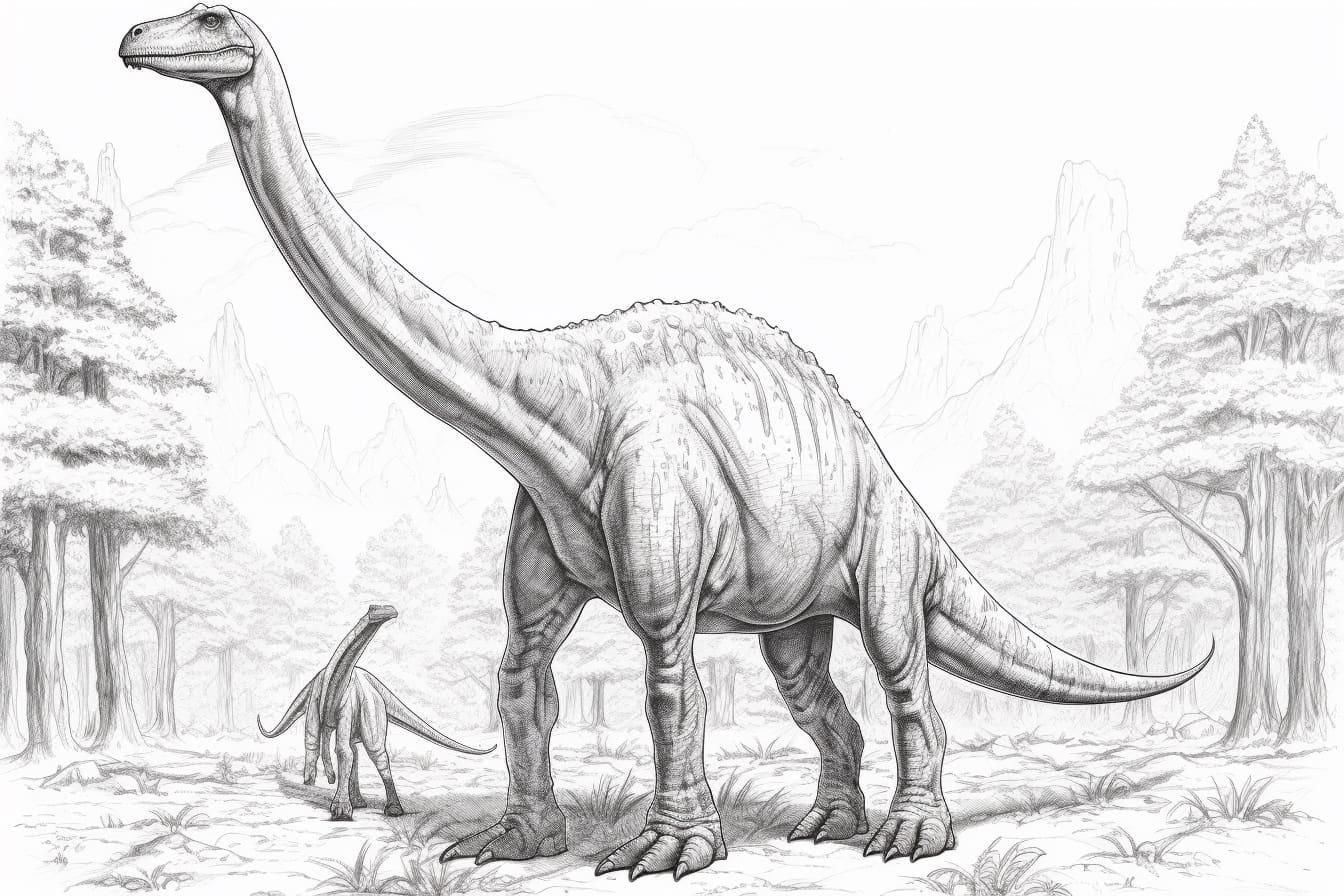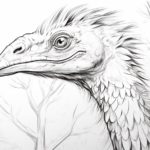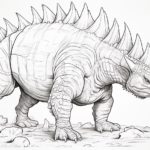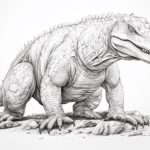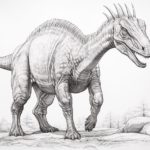The Diplodocus, a majestic and long-necked dinosaur from the Jurassic period, has captured the imagination of artists and paleontologists alike for decades. Its graceful silhouette and immense size make it a fascinating subject for artists looking to capture a sense of prehistoric wonder on paper. In this guide, we will explore the key features of the Diplodocus and provide step-by-step instructions on how to draw this iconic dinosaur with accuracy and flair. Whether you are a seasoned artist or a beginner looking to expand your drawing skills, join us on this artistic journey as we bring the Diplodocus to life on the page.
Materials Required
To draw a Diplodocus, you will need the following materials:
- Drawing paper or sketchbook
- Pencils in various hardness (such as 2H, HB, 2B)
- Eraser (preferably a kneaded eraser for more precise erasing)
- Sharpener
- Ruler (for straight lines and proportions)
- Reference images of Diplodocus for accuracy
- Optional: Colored pencils or markers for adding color to your drawing.
How to Draw a Diplodocus: a Step-by-step Guide
Step 1: Gather Your Materials
Gather all the necessary materials for drawing a Diplodocus. You will need a pencil, eraser, drawing paper, ruler, and any coloring materials you may want to use.
Step 2: Start with Basic Shapes
Begin by drawing the basic shapes that make up the body of the Diplodocus. Start with an oval shape for the body, a smaller oval for the head, and long, curved lines for the neck and tail.
Step 3: Add Details to the Body
Add more details to the body by drawing the limbs of the Diplodocus. Use long, curved lines to create the legs and tail, making sure to keep the proportions and size in mind.
Step 4: Sketch the Head and Neck
Sketch the head and neck of the Diplodocus by adding more details to the oval shape you drew earlier. Add the eye, mouth, and any other features you want to include.
Step 5: Refine the Details
Refine the details of the Diplodocus by adding scales or texture to its skin. You can also add more definition to the limbs and tail to make them look more realistic.
Step 6: Erase Unnecessary Lines
Go over your drawing and erase any unnecessary or overlapping lines. This will help clean up the drawing and make it look more polished.
Step 7: Add Color (Optional)
If you want to add color to your drawing, now is the time to do so. Use colored pencils, markers, or any other coloring materials to bring your Diplodocus to life.
Step 8: Final Touches
Add any final touches or details to your drawing to complete the look of the Diplodocus. Take a step back and admire your work, making any final adjustments if needed.
Step 9: Sign and Date
Don’t forget to sign and date your drawing to mark it as your own creation. Congratulations on drawing a Diplodocus!
Conclusion
In conclusion, drawing a Diplodocus can be a rewarding and engaging experience for artists of all levels. By following the step-by-step guide outlined in this article, you can learn valuable techniques for capturing the unique features and proportions of this magnificent dinosaur. Remember to practice regularly, stay patient, and embrace your own artistic style to create a masterpiece that showcases your creativity and love for the prehistoric world. Happy drawing!
Fun Facts About Diplodocuses
- Diplodocuses were some of the longest land animals to ever roam the Earth, with some individuals reaching lengths of up to 90 feet (27 meters).
- Despite their massive size, Diplodocuses had relatively small heads compared to the rest of their body, with long, slender necks that made up about half of their total length.
- Diplodocuses were herbivores, feeding on plants and foliage with their peg-like teeth. They likely used their long necks to reach high branches and leaves that other dinosaurs couldn’t access.
- These dinosaurs lived during the Late Jurassic period, around 155-145 million years ago, in what is now North America. Fossil evidence suggests they may have traveled in herds for protection and foraging purposes.
- Diplodocuses had a whip-like tail that could be used as a defensive weapon against predators. They could swing their tails with great force to fend off attackers.
- The first Diplodocus fossil was discovered in 1877 in Colorado, USA, by paleontologist Othniel Charles Marsh. Since then, many more specimens have been found, helping scientists learn more about these fascinating creatures.
- Diplodocuses may have had a symbiotic relationship with small birds or insects that lived on their bodies, similar to modern-day oxpeckers that help clean and protect large mammals.
- Despite their massive size, Diplodocuses were likely capable of moving relatively quickly, reaching speeds of around 10-15 miles per hour (16-24 kilometers per hour) when necessary.
- The name “Diplodocus” means “double beam” in reference to the double-beamed chevron bones found in the underside of their tails, which helped support and strengthen their long tails.
- Diplodocuses were among the most well-known and beloved dinosaurs of the Late Jurassic period, capturing the imagination of people around the world with their impressive size and unique anatomy.
Suggestions for Scenes and Settings for Diplodocus Drawings
Certainly! Here are some specific suggestions for scenes and settings featuring Diplodocus in drawings:
- Prehistoric landscape: Set Diplodocus in its natural habitat during the Jurassic period, surrounded by lush green ferns, towering coniferous trees, and other dinosaurs like Stegosaurus and Brachiosaurus.
- Volcanic eruption: Show Diplodocus fleeing from a volcanic eruption, with ash and lava spewing from a nearby volcano, creating a dramatic and dynamic scene.
- Underwater world: Imagine Diplodocus swimming in a prehistoric ocean, accompanied by other marine creatures like plesiosaurs and ammonites, with colorful coral reefs and seaweed in the background.
- Jurassic safari: Place Diplodocus in a modern-day safari setting, where tourists are observing the dinosaur from a safe distance in jeeps, surrounded by savannah grasslands and acacia trees.
- Ancient ruins: Depict Diplodocus exploring ancient ruins of a lost civilization, with crumbling stone structures and overgrown vegetation adding a sense of mystery and adventure to the scene.
- Celestial landscape: Transport Diplodocus to a fantastical setting in outer space, with swirling galaxies, shooting stars, and a cosmic backdrop, showcasing the dinosaur in a truly otherworldly environment.
- Arctic tundra: Show Diplodocus in a snowy landscape, surrounded by icebergs, polar bears, and penguins, highlighting the contrast between the dinosaur’s warm-blooded nature and the cold surroundings.
- Dinosaur migration: Illustrate a herd of Diplodocus traveling together on a long migration journey, crossing rivers, mountains, and valleys, showcasing the sense of unity and community among these ancient creatures.
Feel free to pick any of these suggestions as inspiration for your Diplodocus drawings, and let your creativity soar as you bring these scenes to life on paper!

